Last week we started building up our own project related using the soft circuit. I really like butterflies, and I also have some remaining cloth, threads (and skills) from costume design class, I came up with the mind of making a butterfly with the patterns on the wings can shine.
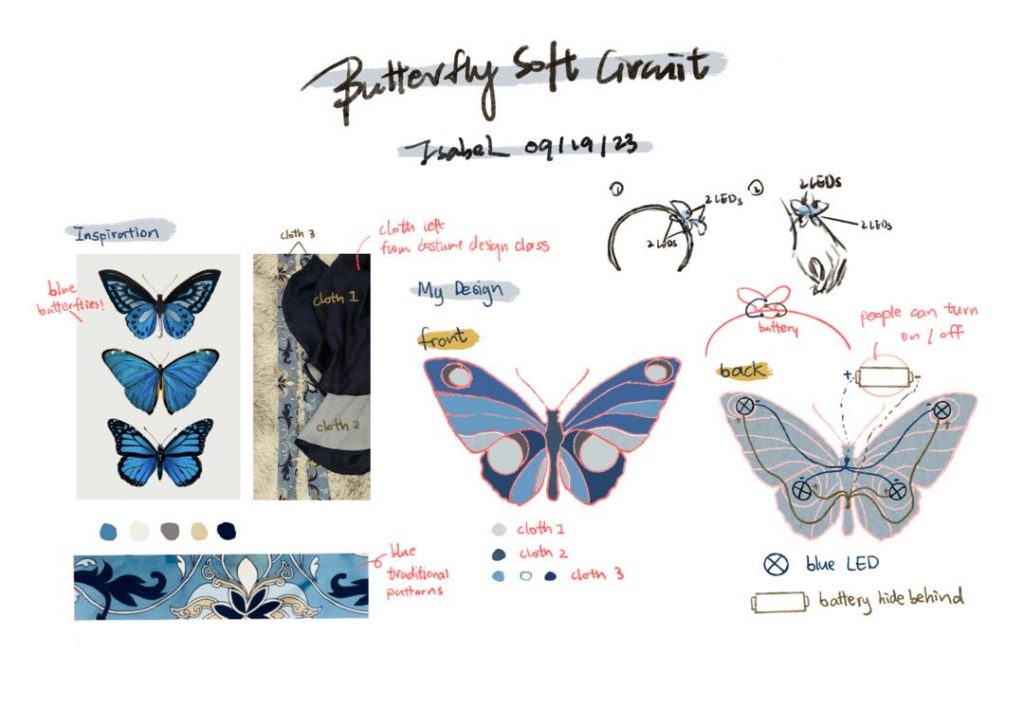
This project is actually more challenging than I thought. First, I am not familiar with the circuit for a long time, and in the process of building the circuit, I met a lot of problems (please see the portfolio). Likely, I told myself to have a growth mindset and solve the problems step by step. I asked for help from my friend who majored in physics. Hence though I was not very confident about the whole project, I was optimistic at each moment. Fortunately, I made it.
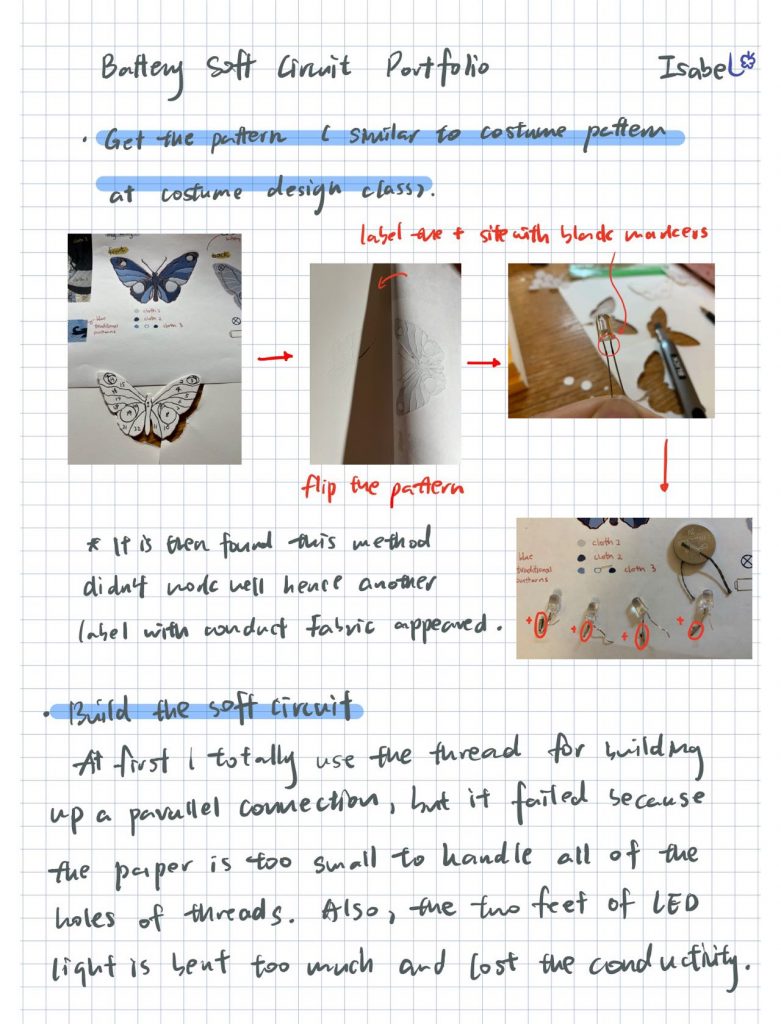
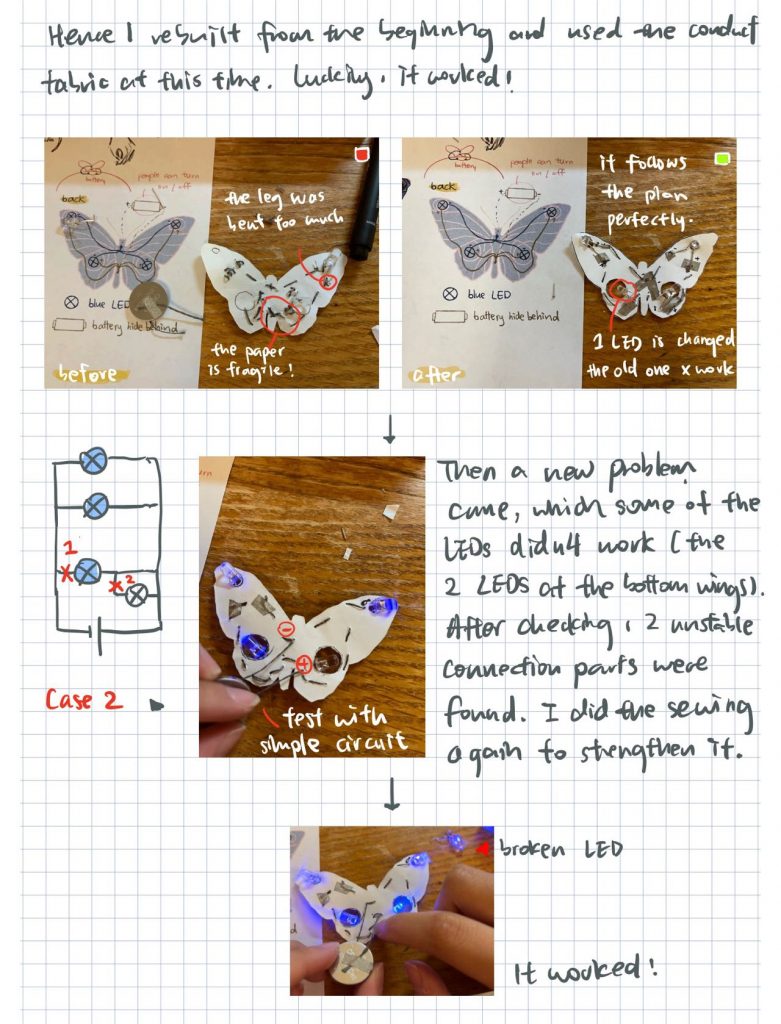
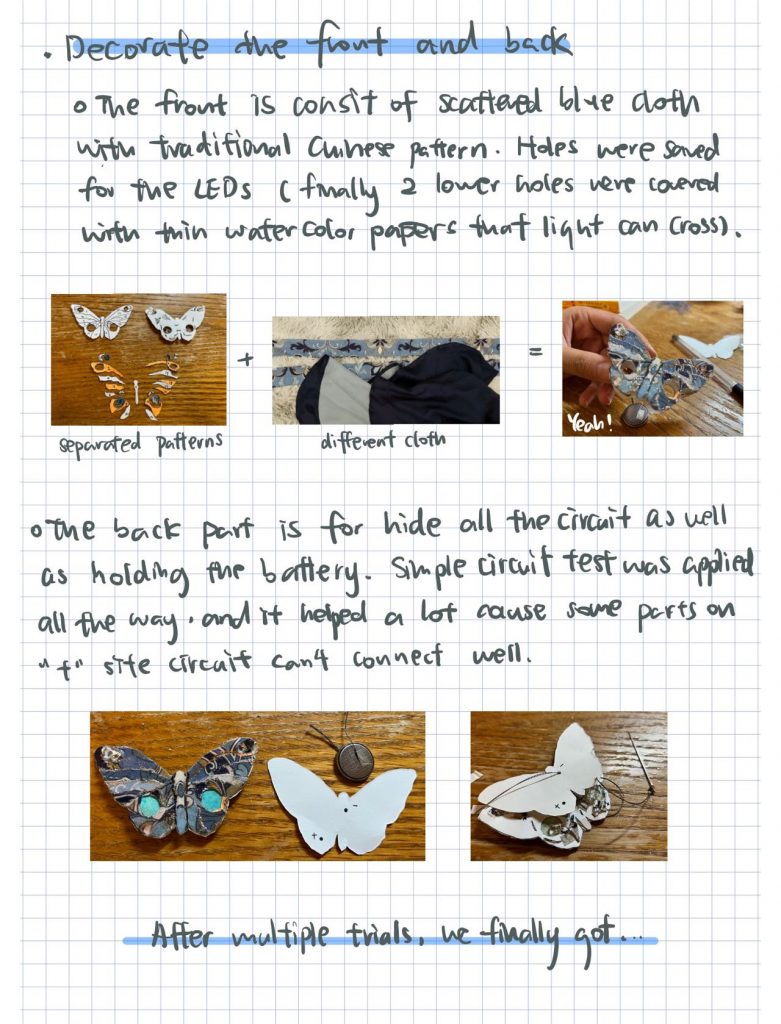
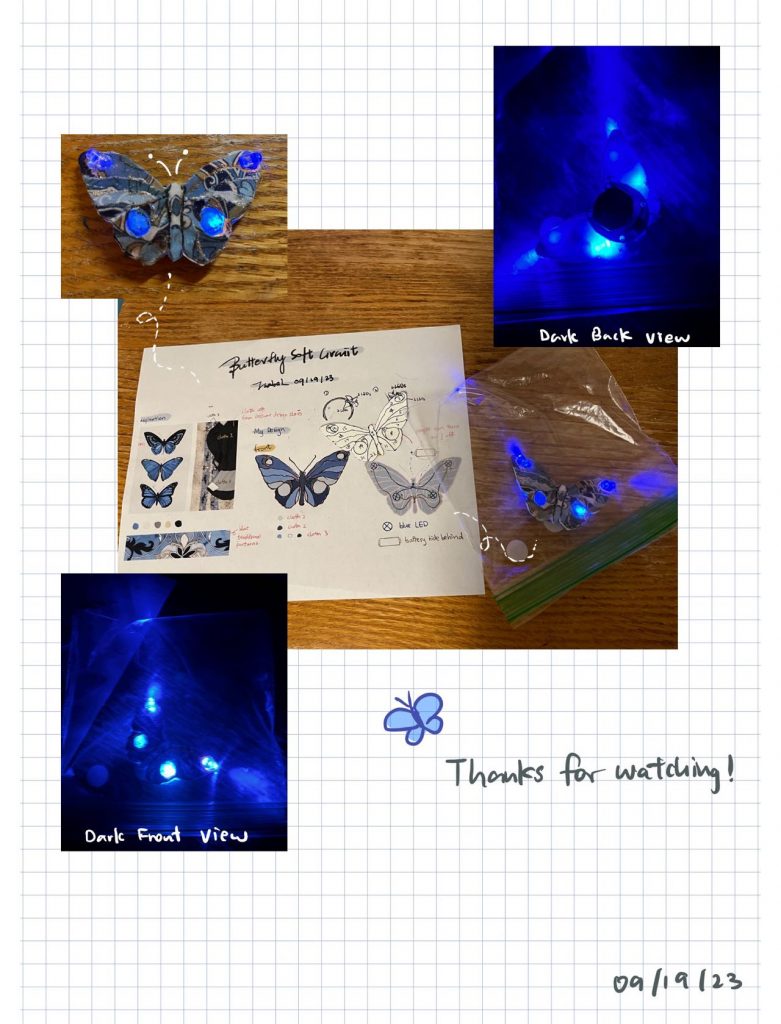
If I can revise, I will choose to work earlier!! All the things just collided together. Definitely, my time arrangement should be enhanced in the future!
(Below are original files of sketches and portfolio!)
https://drive.google.com/file/d/1dBRja6BHliL2jRSfT1F-fwKsqhUJ-FmH/view?usp=drive_link
https://drive.google.com/file/d/10Kp5vSq_p4Jea8QbILvXx64VO4Mxtdpt/view?usp=sharing
Reflection
Reflecting on my recent project involving soft circuits, it has been an enlightening journey that pushed the boundaries of my comfort zone. Inspired by my love for butterflies and armed with some costume design materials and skills, I embarked on the idea of creating a butterfly with illuminated patterns on its wings. This project turned out to be more challenging than I initially anticipated. My knowledge of circuits was rusty, and I encountered numerous obstacles during the construction process, as documented in my portfolio. The biggest difficulty I met was sewing the soft circuit thread, as each foot of LEDs need to be settled by extra threads and they were mixing together and became confusing, especially for a person not familiar with circuits. I really redid twice and organized the thread, the LEDs and the paperboard twice, and my effort fortunately worked. This really was a big step proving that I can go outside the confront zone.
What stands out from this experience is the importance of maintaining a growth mindset. I repeatedly told myself to embrace challenges and tackle problems step by step. Seeking help from a friend with a physics background was a turning point, emphasizing the significance of collaboration and reaching out for support when needed. Although I had moments of self-doubt, I remained optimistic throughout the project, and, eventually, I successfully completed it. Looking back, I realize that if I could revise one aspect of this journey, it would be to start working on it earlier to alleviate the pressure of everything coming together at once.
Expanding this reflection to my broader learning journey, I’ve noticed a pattern of embracing or avoiding courses and activities based on my perceived comfort zone. Self-efficacy and mindset play significant roles in these decisions. When I believed in my abilities and maintained a growth mindset, I was more likely to take on challenges, even if they were outside my comfort zone. Conversely, when I doubted myself or had a fixed mindset, I hesitated to embrace new opportunities. If I could advise my former self, I would emphasize the importance of self-belief, the power of a growth mindset, and the value of seeking help when needed. I would encourage myself to take on challenges, even when they seem daunting, as these experiences are where true growth and learning occur.
